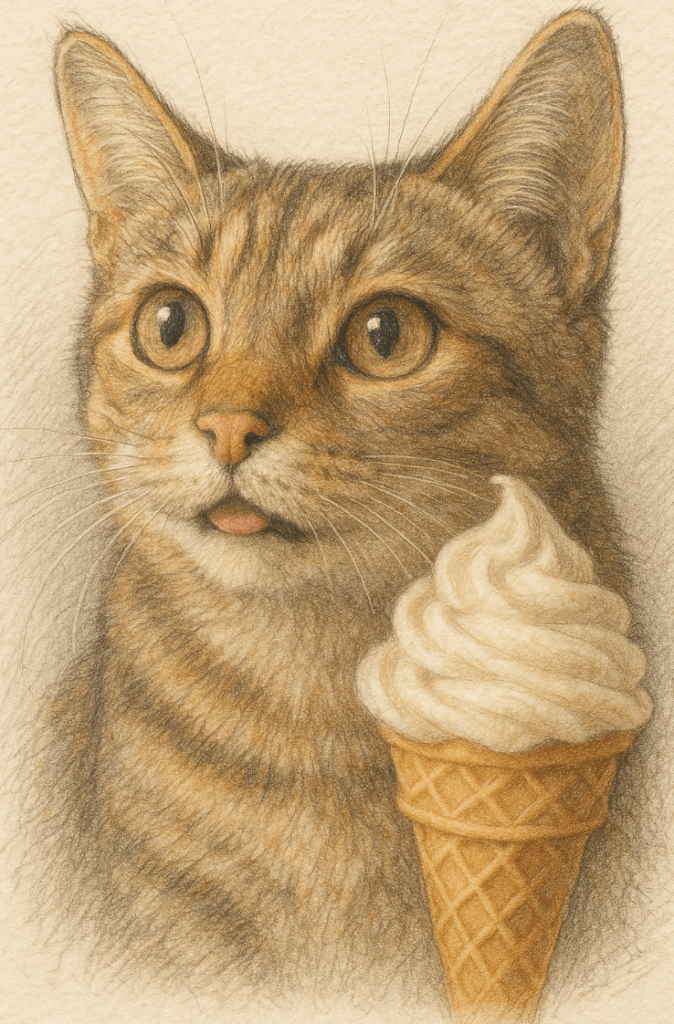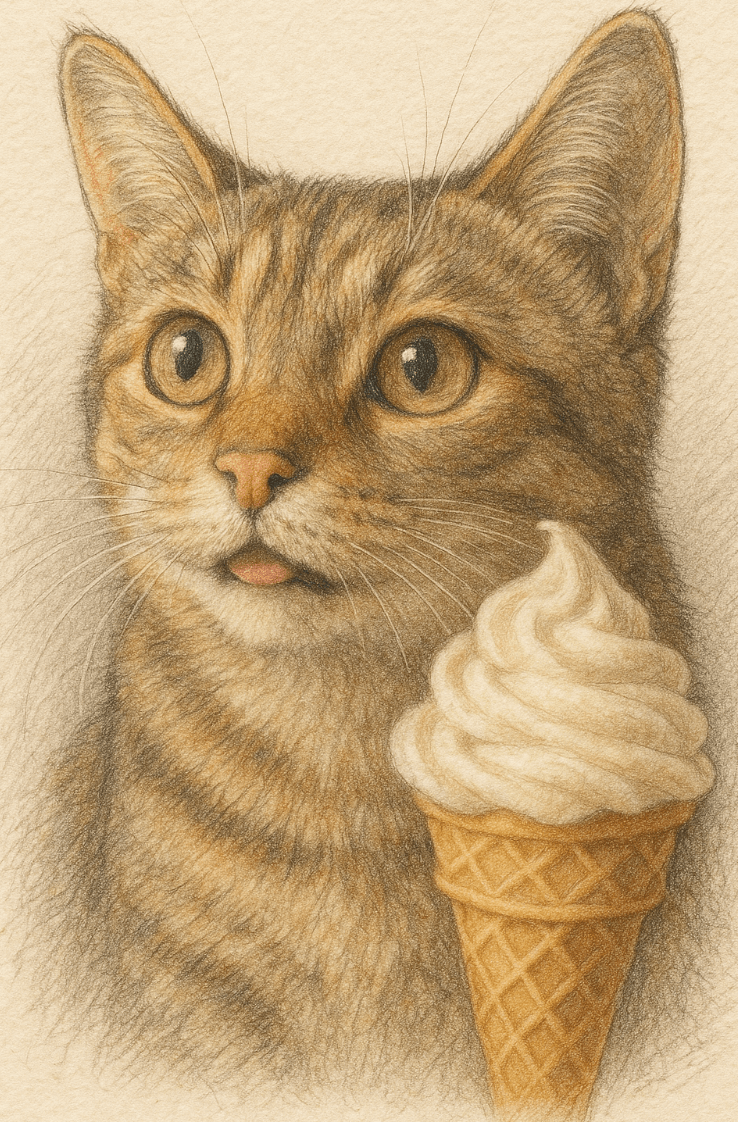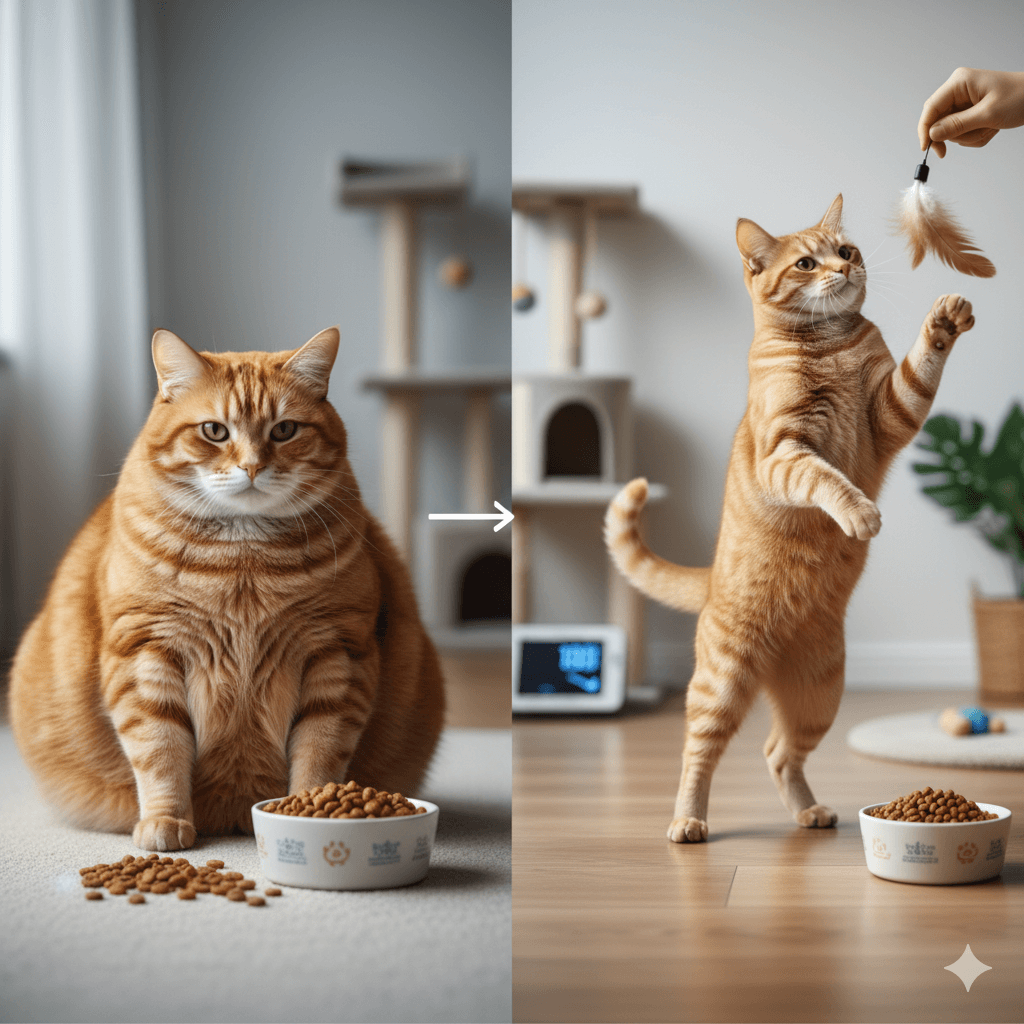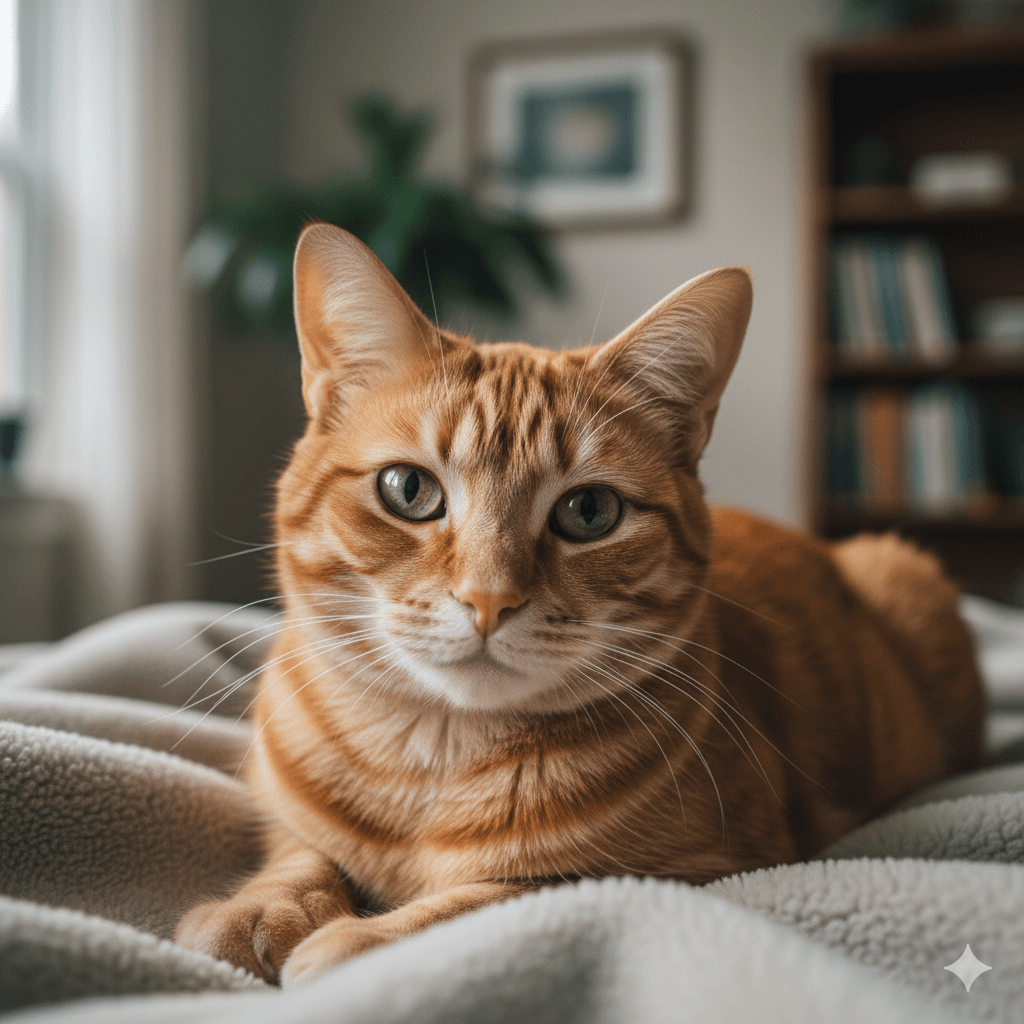Can Cats Eat Vanilla?
When it comes to our feline friends, many pet owners wonder whether certain human foods are safe for their cats. Vanilla, a popular flavor in desserts and beverages, often sparks curiosity among cat owners. While vanilla itself isn’t inherently toxic to cats, there are important factors to consider before sharing anything containing vanilla with your furry companion. Understanding the potential risks, benefits (if any), and safer alternatives is key to ensuring your cat’s health and happiness. In this blog post, we’ll explore everything you need to know about cats and vanilla, from its effects on their digestive system to tips for keeping them safe.
Potential Risks of Feeding Vanilla to Cats
While vanilla may seem harmless, certain components can pose risks to your cat’s health. Here’s what you need to be aware of before introducing vanilla into their diet.
High Sugar Content:
Many vanilla-flavored products contain added sugar, which can lead to obesity, diabetes, or dental issues in cats.Artificial Additives:
Processed vanilla extracts or flavorings often include artificial ingredients that may upset your cat’s stomach or cause allergic reactions.Alcohol in Extracts:
Pure vanilla extract contains alcohol, which is toxic to cats and can cause symptoms like vomiting, lethargy, or difficulty breathing.Digestive Upset:
Even small amounts of vanilla can irritate a cat’s sensitive digestive system, leading to diarrhea or vomiting.Nutritional Imbalance:
Cats are obligate carnivores, meaning they derive nutrients primarily from meat. Feeding them non-essential foods like vanilla offers no nutritional value and may disrupt their balanced diet.
These risks highlight why caution is essential when considering vanilla or vanilla-flavored treats for your cat.
Signs Your Cat May Have Eaten Vanilla
If your cat accidentally consumes vanilla or a vanilla-containing product, watch for these signs of distress. Early detection can help prevent complications.
Vomiting or Diarrhea:
These are common symptoms of digestive upset caused by unfamiliar or harmful substances.Lethargy or Weakness:
A sudden lack of energy could indicate toxicity or an adverse reaction to ingredients like alcohol.Excessive Drooling:
Drooling may signal nausea or irritation in your cat’s mouth or throat.Loss of Appetite:
If your cat refuses food after consuming vanilla, it could be a sign of discomfort or illness.Difficulty Breathing:
This serious symptom may occur if your cat ingests alcohol-based vanilla extract and requires immediate veterinary attention.
Recognizing these signs allows you to act quickly and ensure your cat receives proper care if needed.
Check this guide 👉Can Cats Eat Chestnuts? Best 7 Expert Tips!
Check this guide 👉Can Cats Eat Maple Syrup? Best 7 Expert Tips!
Check this guide 👉Can Cats Eat Dandelions? Best 7 Expert Tips!

Safe Alternatives to Vanilla | Risks of Unsafe Vanilla Products |
|---|---|
Plain water or cat-safe milk | Alcohol-based vanilla extracts |
Catnip-infused treats | Sugary vanilla desserts or syrups |
Homemade chicken broth (unsalted) | Artificially flavored vanilla products |
Freeze-dried meat snacks | Baked goods with vanilla and dairy |
Fresh fruits like blueberries | Store-bought vanilla pudding or yogurt |
How to Safely Introduce New Flavors to Your Cat
If you’re curious about expanding your cat’s palate, it’s important to do so safely and responsibly. Follow these guidelines to minimize risks.
Consult Your Veterinarian First:
Always seek professional advice before introducing new foods to ensure they’re safe for your cat.Start with Small Amounts:
Offer tiny portions of any new food to monitor your cat’s reaction and avoid overwhelming their system.Avoid Human Foods with Additives:
Stick to plain, unseasoned foods free from sugar, salt, or artificial flavors.Observe for Allergic Reactions:
Watch for signs like itching, swelling, or gastrointestinal upset after introducing a new food.Stick to Cat-Specific Treats:
Opt for treats specifically formulated for cats rather than experimenting with human snacks.
By following these steps, you can satisfy your cat’s curiosity without compromising their health.
Benefits of a Balanced Diet for Cats
A well-balanced diet is crucial for your cat’s overall health and longevity. Here’s how proper nutrition supports their well-being.
Supports Healthy Digestion:
High-quality protein and fiber promote optimal digestion and reduce the risk of gastrointestinal issues.Boosts Immune Function:
Essential vitamins and minerals strengthen your cat’s immune system, helping them fight off illnesses.Promotes Healthy Skin and Coat:
Omega-3 fatty acids and other nutrients contribute to a shiny coat and healthy skin.Maintains Energy Levels:
Proper nutrition ensures your cat has the energy they need for play, exercise, and daily activities.Prevents Obesity and Related Conditions:
A balanced diet helps maintain a healthy weight, reducing the risk of obesity-related diseases like diabetes.
Providing your cat with a nutritious diet ensures they thrive and remain happy companions for years to come.
Common Mistakes to Avoid When Feeding Cats Human Foods
Feeding cats human foods can be tempting, but mistakes can endanger their health. Here are some pitfalls to avoid.
Assuming All “Natural” Foods Are Safe:
Just because a food is natural doesn’t mean it’s safe for cats—always research first.Ignoring Portion Sizes:
Even small amounts of harmful foods can cause problems for your cat’s sensitive system.Offering Dairy Products:
Contrary to popular belief, most cats are lactose intolerant and can experience digestive issues from dairy.Using Spices or Seasonings:
Ingredients like garlic, onion, or salt can be toxic to cats and should never be included in their food.Neglecting Professional Advice:
Skipping a vet consultation before introducing new foods can lead to unintended consequences.
Avoiding these mistakes ensures your cat stays healthy and safe.
Alternatives That Mimic the Appeal of Vanilla
If you’re looking to treat your cat without using vanilla, there are plenty of safer options that mimic its appeal.
Catnip Treats:
Catnip-infused snacks provide a fun and stimulating alternative that cats love.Homemade Broth:
Unsweetened, unsalted broths made from chicken or beef can entice your cat without added sugars or artificial flavors.Freeze-Dried Meat Snacks:
These treats offer a rich, savory flavor that satisfies your cat’s carnivorous cravings.Fresh Fruits (in Moderation):
Fruits like blueberries or watermelon can serve as occasional, healthy treats for adventurous cats.Specialty Cat Ice Cream:
Some brands offer lactose-free, cat-safe “ice cream” designed specifically for felines.
These alternatives allow you to indulge your cat’s curiosity without compromising their health.
Understanding Your Cat’s Natural Instincts Around Food
Cats are naturally curious creatures, and their instincts drive them to explore new scents and flavors. Understanding these behaviors helps explain their interest in human foods like vanilla.
Hunting Behavior:
Wild cats rely on hunting for fresh prey, so domestic cats may show interest in novel smells or tastes as part of their instinctual nature.Scent Sensitivity:
Cats have highly developed senses of smell, making strong aromas like vanilla particularly intriguing to them.Curiosity About Human Habits:
Cats often mimic or investigate their owner’s actions, including eating habits, which may draw them to human foods.Preference for Protein-Rich Foods:
As obligate carnivores, cats are naturally drawn to meat-based flavors over sweet or plant-based options.Territorial Marking Through Taste Exploration:
Licking or nibbling on objects, including food, can serve as a way for cats to assert ownership or relieve stress.
By recognizing these instincts, you can better address your cat’s needs in a safe and controlled manner.
Frequently Asked Questions About Cats and Vanilla
Is vanilla extract safe for cats?
No, vanilla extract often contains alcohol, which is toxic to cats and should be avoided entirely.
Can cats eat vanilla ice cream?
While small amounts of plain ice cream may not harm most cats, the sugar and dairy content can upset their stomachs.
What should I do if my cat eats vanilla?
Monitor your cat for symptoms like vomiting or lethargy. Contact your vet immediately if you notice any concerning signs.
Are natural vanilla beans safe for cats?
Natural vanilla beans aren’t toxic, but they offer no nutritional value and can still upset your cat’s stomach if consumed.
Can kittens eat vanilla?
Kittens have even more sensitive systems than adult cats, so it’s best to avoid giving them vanilla altogether.
Prioritizing Your Cat’s Health When It Comes to Vanilla
While vanilla itself isn’t highly toxic to cats, it offers no nutritional benefits and can pose risks depending on the form or preparation. To keep your cat safe, avoid feeding them vanilla or vanilla-flavored products altogether. Instead, focus on providing a balanced, species-appropriate diet that meets their unique needs. By staying informed and cautious, you can ensure your feline friend enjoys a long, healthy, and happy life. Remember, when in doubt, always consult your veterinarian for guidance tailored to your cat’s individual health requirements.
Is Cat Saliva Antibacterial? Many cat owners have wondered whether their feline’s saliva has healing or antibacterial properties—especially after seeing cats lick …
How Fast Can a Cat Lose Weight: Best 7 Expert Tips! – Safe rates, warning signs & vet-approved strategies for healthy feline weight loss.
How Fast Can a Dog Lose Weight: Best 7 Expert Tips! – Safe rates, red flags, and vet-approved strategies for healthy dog weight loss.
Understanding Pilar Cyst in Cats: Best 7 Expert Tips! – Spot, assess & care for benign feline skin cysts with vet-backed guidance.




